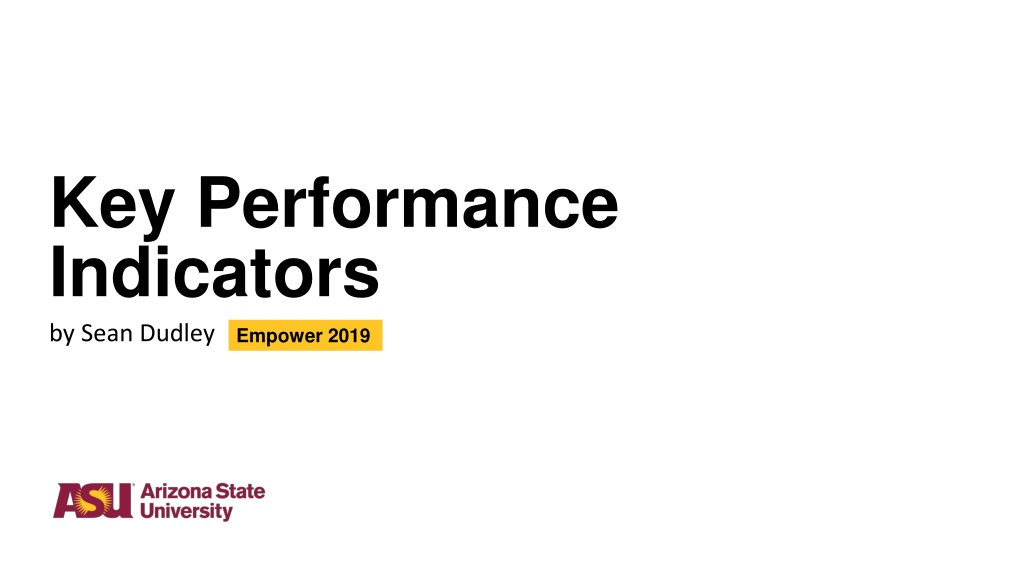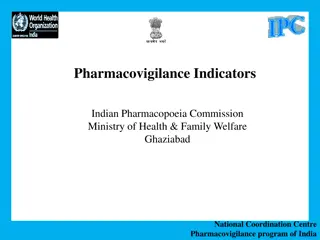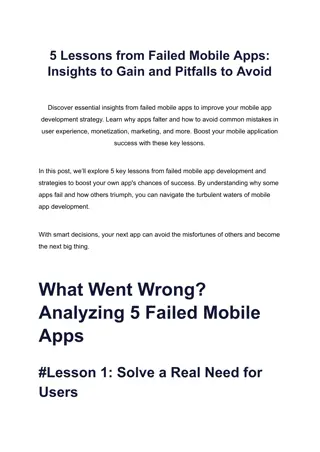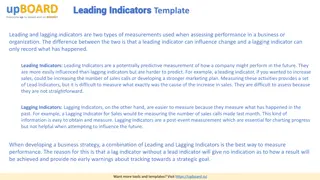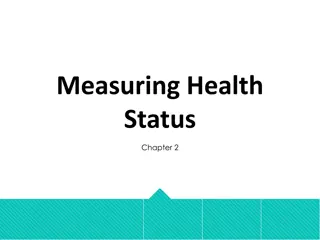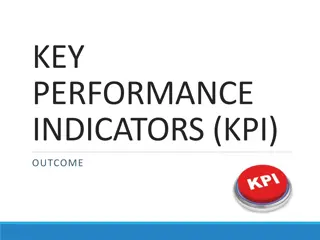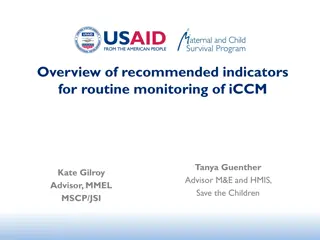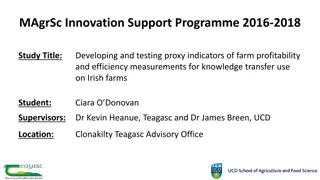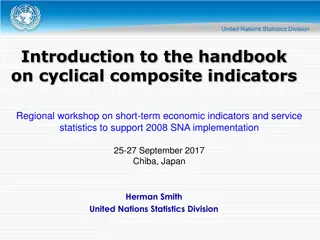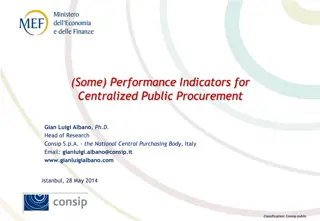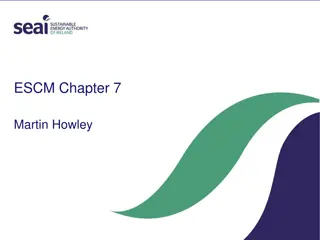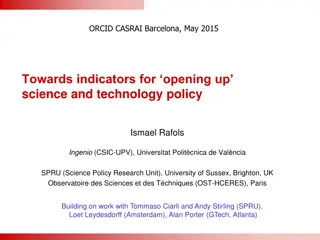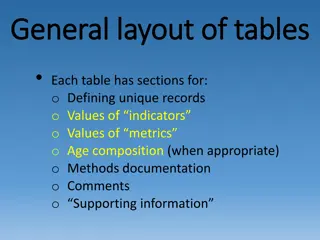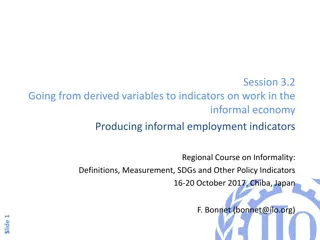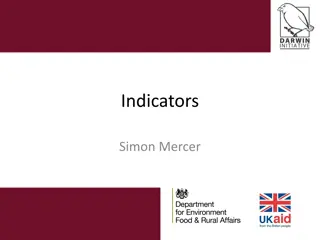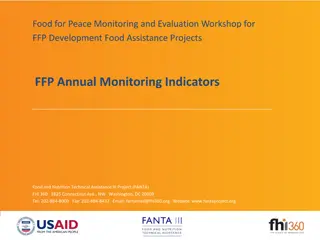Comprehensive Guide to Key Performance Indicators and Pitfalls
Learn about the importance of Key Performance Indicators (KPIs) in managing and improving organizational performance. Discover how to develop KPIs, set goals, gather data, and avoid common pitfalls that hinder success in KPI implementation.
Download Presentation

Please find below an Image/Link to download the presentation.
The content on the website is provided AS IS for your information and personal use only. It may not be sold, licensed, or shared on other websites without obtaining consent from the author. Download presentation by click this link. If you encounter any issues during the download, it is possible that the publisher has removed the file from their server.
E N D
Presentation Transcript
Key Performance Indicators by Sean Dudley Empower 2019
token introductory quote What gets measured measured, gets managed managed. - or - "If you can't measure measure it, you can't manage manage it." Peter Drucker
What we deliver, who we serve, to what extent we provide Service Level Agreement Capture and log every service interaction Intake Management Ensure duration, transitions, outcomes are being tracked Where to start Workflow Monitoring Connect service delivery with the overall mission Establish why Quality and process is guaranteed by everyone Train and educate
Set goals with your key stakeholders Gather quantitative and qualitative data What s next Develop Key Performance Indicators Routinely re-evaluate cost vs benefit
A few common reasons to deploy KPIs Support continuous improvement Promote individual and organizational agility Provide transparency to stakeholders Identify ways to enhance capacity Maintain financial awareness Add resources, assign merit and promotions Monitor adherence to best practices Detect changes in workload type and volume What are they?
Common pitfalls Degree of effort capture does not allow for meetings, micro-requests, food, restroom Failure to collect appropriate data Customers or staff are overly interrogated Service agreement lacks a best effort component Metrics report state of affairs Management response is mandating instead of coaching
Common pitfalls Overly prescribed existence The death of creativity among staff Improper communication and execution We need you to start logging your time Failure to integrate the customer as the purpose Why are you not getting as much done Instills transactional thinking Encourages cherry-picking
Common pitfalls Failure to socialize and continuously improve measures Cost vs benefit is not revisited Work instructions are compounded instead of streamlined Forget to baseline Lack of proper control considerations, such as differing proficiency levels workload disparity other outcome-impacting heterogeneity
A few practical examples
KPIs are surprisingly uncommon among university- based research administration organizations and are only recently gaining widespread interest Almost a decade ago we spent two years revising and stabilizing processes by developing work instructions, KPIs, and other mechanisms as preparation for automation to avoid doing bad things more quickly A quick aside KED implemented a comprehensive quality framework to further integrate continuous improvement with our process structures and culture, becoming the first ISO 9001 certified research operations organization in the United States
What do we see? Volatility became a significant issue before the average eclipsed our 30-day target What else could be done? This activity involves multiple parties: identify duration among each party Break out by agreement type and any other differentiating factors Processing Agreements - Quantitative
What do we see? The implementation of new award management and financial systems How does this help? Understand the degree of impact to customers to drive outreach Evaluate the efficacy of new solutions Award Activations - Quantitative
What do we see? Q1: How satisfied are you with the edits you received on your proposal? Extremely Satisfied Non-prescriptive, non-assumptive questioning Somewhat Satisfied Neither Satisfied nor Dissatisfied Somewhat Dissatisfied Extremely Dissatisfied 0 5 10 15 20 25 How does this help? Illustrate buy-in for an emerging service Q2: How easy was it to process the editor's changes? Extremely Easy Somewhat Easy Pair with metrics to isolate what is working and what is not, subjective experience outweighs measurement Neither Easy nor Difficult Somewhat Difficult Extremely Difficult 0 5 10 15 20 25 Research Editing - Qualitative
Develop and manage work instructions Team-level assertion or modification checkpoints Evaluate outliers, examine volatility Assess outcomes across the same activity type to determine where training is needed Employ a working managers model Offers continuous evaluation of methods and a qualified escalation path for KPI- impacting rabbit holes Empower the customer and the front line Further improvement
Join the Organizational Excellence Community of Practice (OECoP) Led by Clayton Taylor Consider deputizing local team members Explore Six Sigma for Service, ITIL, etc Learn to use Tableau and leverage analytics.asu.edu Understand the fundamental structures of quality systems such as ISO 9001 Additional recommendations
Polling How many of you have KPIs in place that you use to drive change How many of you have taken or are interested in process improvement training How many of you are interested in implementing KPIs for your group
